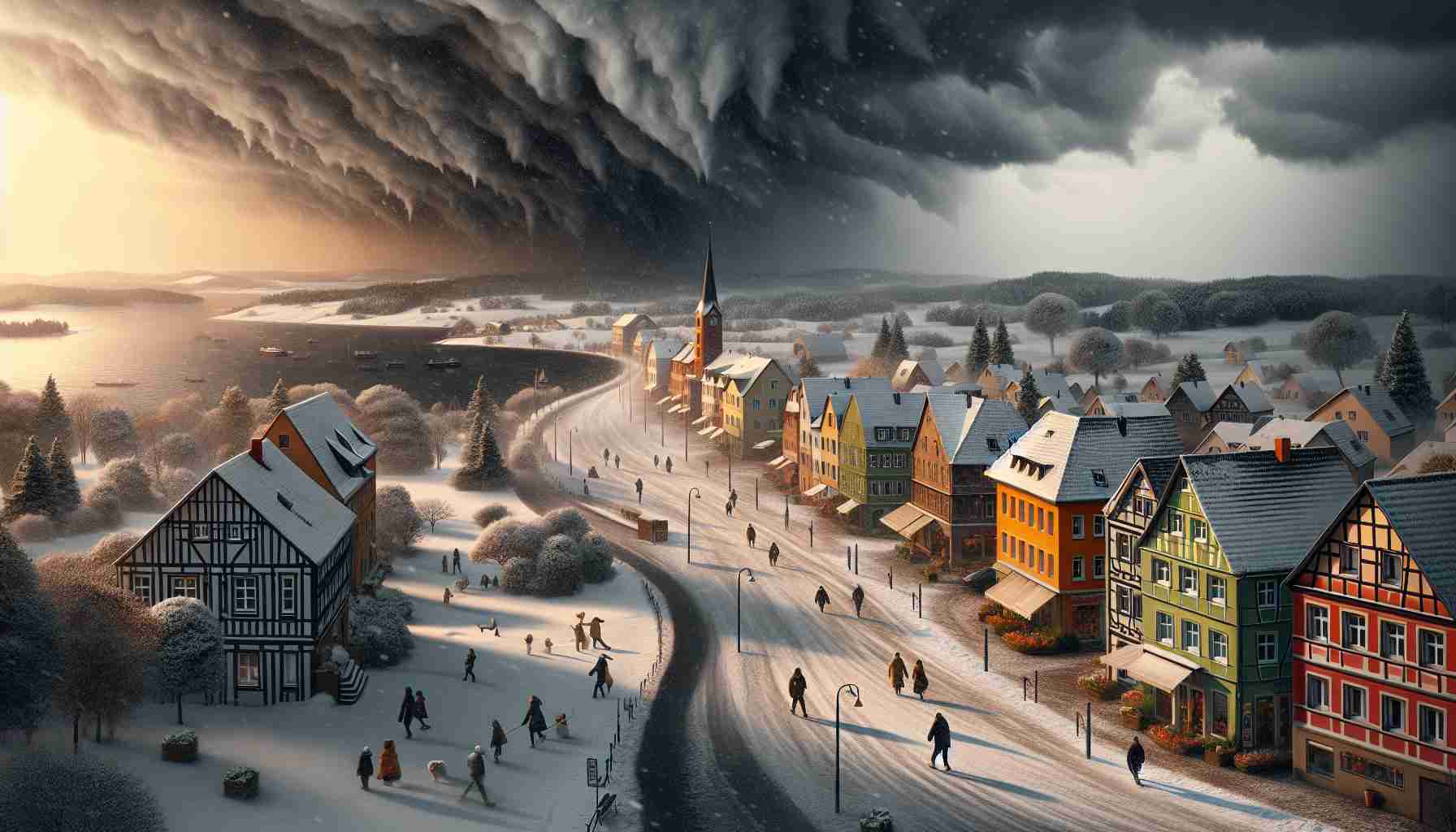- A significant high-pressure system is impacting Germany’s winter weather, with potential for both cold air from Russia and unchanged conditions.
- High Caroline brings chilly nights, with temperatures dropping to between 0 and -9 degrees Celsius.
- Daytime temperatures may vary from 0 to 8 degrees Celsius, influenced by local fog or sunshine.
- Although snow is unlikely now, a sudden cold snap could emerge.
- The outcome for February remains uncertain, with possibilities ranging from a prolonged harsh winter to mild Atlantic conditions.
- Critical upcoming days will determine the winter’s trajectory for Germany.
As winter unfolds, Germany stands at a meteorological crossroads. A massive high-pressure system stretching over 6,000 kilometers from China to Scandinavia threatens to shake up the weather landscape. Meteorologists warn that this powerful high, boasting a core pressure of 1062 hectopascals, could either usher in icy air masses from Russia or simply stagnate, leaving conditions unchanged.
Initially, Germany will experience the calm, crisp grip of High Caroline. The nights will turn decidedly frosty, with temperatures dipping between 0 and -9 degrees Celsius, while daytime highs may fluctuate between 0 and 8 degrees depending on local fog or sunshine. While snow remains unlikely for now, the forecast suggests a twist—an unexpected cold snap could still be on the horizon.
What’s the takeaway? February will present a mixed bag: chilly nights contrasted against occasionally mild days. As weather models diverge, the nation could either face a harsh, prolonged winter or be spared by a warm Atlantic front. The next few days will be crucial in determining whether the deep freeze will hit or if milder conditions will prevail.
The fate of winter hangs in balance. Will Germany be blanketed in snow and ice, or will spring’s mild breath arrive early? Stay tuned as this weather drama unfolds!
Will Germany Face a Brutal Winter or an Early Spring? Discover the Latest Weather Predictions!
Germany’s Winter Weather Overview
As the winter season progresses, Germany finds itself monitoring a significant high-pressure system that stretches impressively from China to Scandinavia. This high, with a formidable core pressure of 1062 hectopascals, has the potential to either draw icy air from the east or maintain stagnant weather, impacting temperatures and precipitation patterns across the country.
Current Conditions and Predictions
For now, residents can expect the calm and crisp weather associated with High Caroline. This phase is characterized by:
– Frosty Nights: Temperatures are expected to dip between 0 to -9 degrees Celsius during the night.
– Daytime Fluctuations: Daytime highs could vary between 0 and 8 degrees Celsius, influenced by local fog or sunshine.
Although snow is not predicted in the immediate future, there are indications of a potential cold snap that could upend existing forecasts.
Key Insights
– Potential Scenarios: February could reveal a mix of chilly nights and relatively mild days or a complete reversal into a harsh winter. This fluctuation depends heavily on the behavior of weather models and air masses.
– Decision Point: The upcoming days are crucial in determining whether Germany faces sustained freezing temperatures or welcomes an early Atlantic warm front.
Major Questions Answered
1. What are the main factors influencing the winter weather in Germany?
The primary factor is the high-pressure system stretching across different regions, which can either channel cold Siberian air or allow warmer fronts. Coupled with local meteorological phenomena, these factors shape the overall winter climate.
2. How do sudden weather changes impact daily life in Germany?
Sudden fluctuations in temperature and precipitation affect various sectors, including transportation, agriculture, and energy consumption. Cold snaps can lead to increased heating demands and potential disruptions to travel.
3. What historical trends can we observe in Germany’s winter seasons?
Historically, winters in Germany have ranged from mild to severe. Recent years have shown a trend toward milder winters, but abrupt cold snaps are becoming more common due to climate variability.
Related Market Trends and Predictions
– Weather Forecast Models: Advances in meteorological technologies are enhancing the accuracy of predictions, allowing residents to prepare better for unexpected weather changes.
– Energy Consumption Trends: As winters fluctuate between mild and severe, energy companies are adapting their strategies to manage increased demand during cold snaps while also considering sustainability initiatives.
For further insights on Germany’s weather and more, visit DW.
